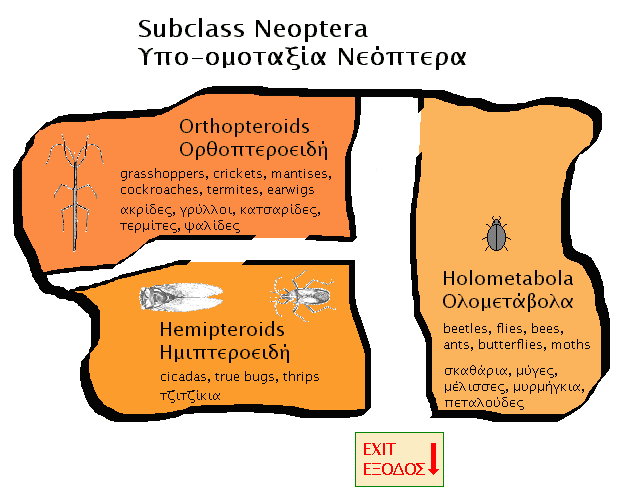
We mentioned in the earlier page (Class Insecta) that the subclass neoptera evolved the ability to fold their wings over their body, thus achieving a survival advantage. A further advance that occurred among the neoptera was the attainment of complete metamorphosis. This resulted in the superorder holometabola, the larvae of which are highly specialized, occupying one ecological niche, while when they transfigure themselves to completely different adult forms they occupy another ecological niche. This holometabolous group of insects exceeded its predecessors in evolutionary attainment.
During the Cretaceous Period (from 140 million to 65 million years before the present), another, wholly different kind of evolutionary event occurred: the origin of advanced social life. Insects in this category, such as termites (superorder orthopteroids), and ants, bees, and some wasps (superorder holometabola) make colonies. Two or more generations overlap in the society, adults take care of the young, and they are divided into reproductive and nonreproductive castes, in other words queens and kings versus workers.
Class Insecta
Subphylum Uniramia
Phylum Arthropoda
Kingdom Animalia
Life on Earth
Index